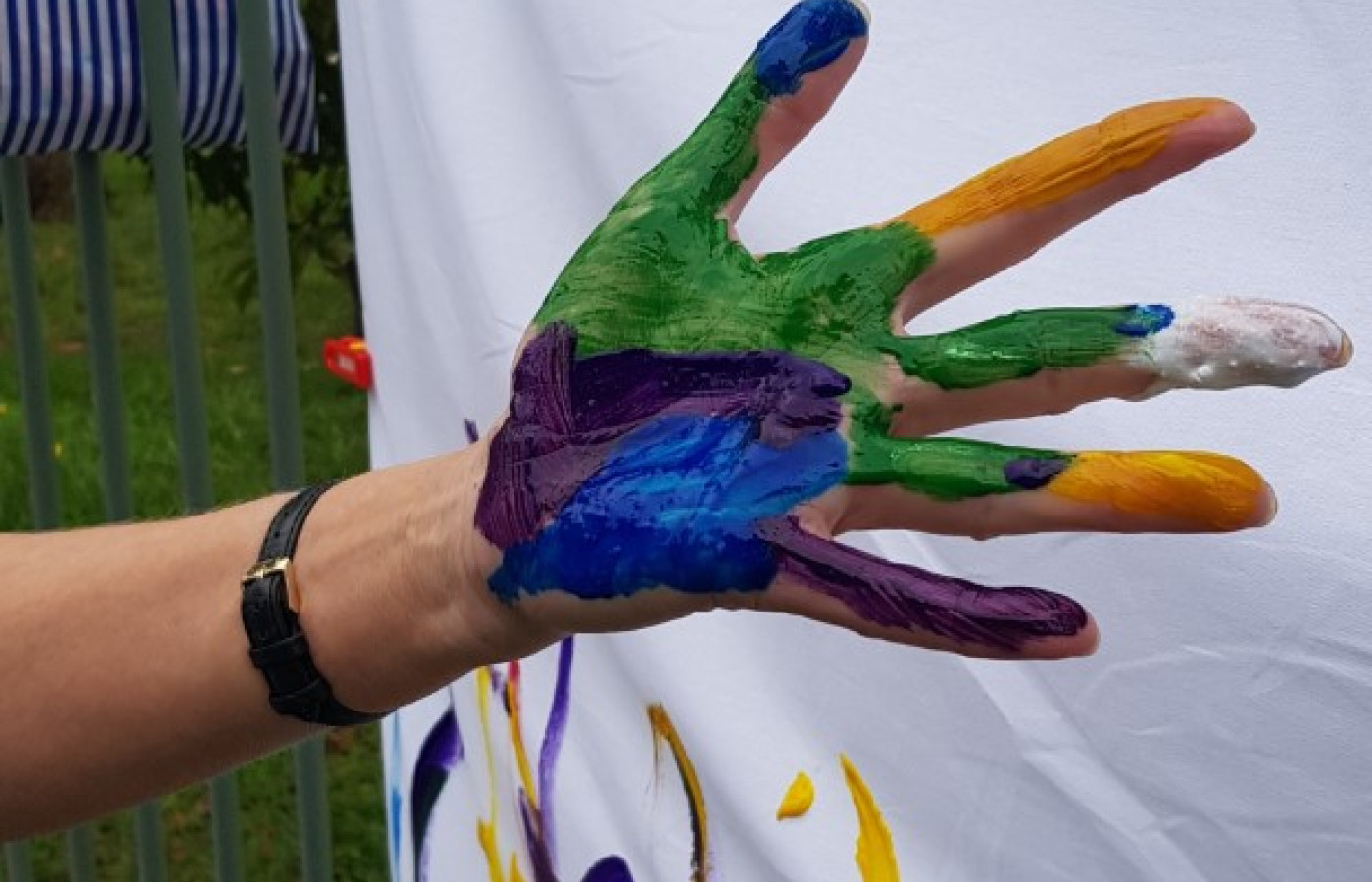Material painting outdoors

Material painting outdoors
Paint a piece of material outdoors
Materials Required
- Old Sheet or piece of material
- Paint brushes
- Washable paints
- Paint pots of cups
- Paint aprons or old t-shirt
Bucket of water to wash hands in, Baby wipes
Play experience profile
-
Ages:
-
Min Playtime15 - 30 Minutes
-
Skills
-
Energy LevelActive play
-
Messiness Rating
-
EYLF Outcomes
Play Experience Preparation
Hang piece of material on a tree, fence or outdoor table - Put coloured paints in pots or cups - Add paint brushes - Have water or baby wipes on hand for clean upExperience Steps
- Introduce the child to area and talk about the coloured paints.
- Encourage your child to explore the paints using the brushes.
- Encourage your child to add paint to the material.
- Talk about the patterns and encourage your child's creativity.
- You could encourage finger/hand prints on the material.

What to talk about, or questions to ask during the experience
- Colours
- Red, yellow, blue
- Up and down
- Painting
- Creating
- Squishy, cold and slimy
- Tell me about your painting
Build on this...
- Bring the painting inside and hang up as a mural.
- Use utensils or other objects to paint with or print on the material.
WHO guidelines for physical activity and sedentary behaviour
Provide evidence-based public health recommendations for children, adolescents and adults on physical activity.
Learn more
Provide evidence-based public health recommendations for children, adolescents and adults on physical activity. Learn more
This activity encourages your child to be active outdoors while being creative. Painting on a large scale involves gross and fine motor movements.
EYLF Outcomes
The Early Years Learning Framework has been designed for use by early childhood educators working in partnership with families, children’s first and most influential educators.
View PDF
The Early Years Learning Framework has been designed for use by early childhood educators working in partnership with families, children’s first and most influential educators. View PDF
- Children develop a range of skills and processes such as problem solving, inquiry, experimentation, hypothesising, researching and investigating
- Children develop dispositions for learning such as curiosity, cooperation, confidence, creativity, commitment, enthusiasm, persistence, imagination and reflexivity
- Children express ideas and make meaning using a range of media
EYLF Principle
Principle 3: High expectations and equity. Children progress well when they, their parents and educators hold high expectations for their achievement in learning.
EYLF Practice
Practice: Learning environments. Indoor and outdoor environments support all aspects of children’s learning and invite conversations between children, early childhood educators, families and the broader community. They promote opportunities for sustained shared thinking and collaborative learning.
Author:


